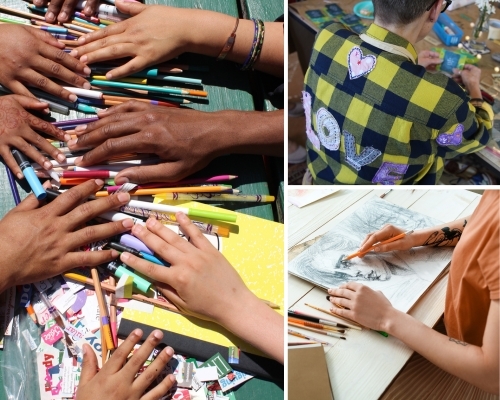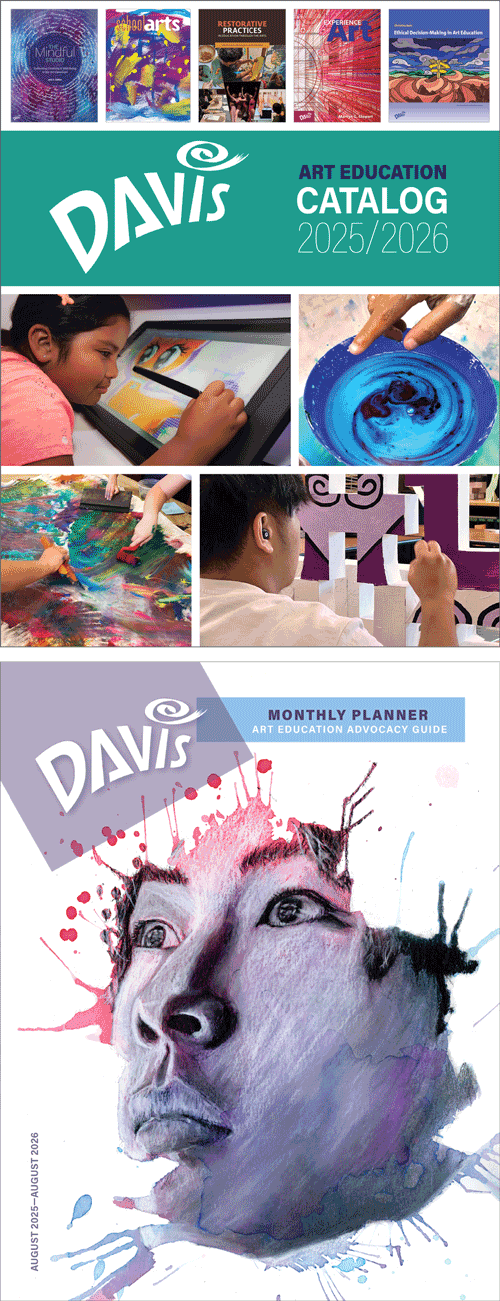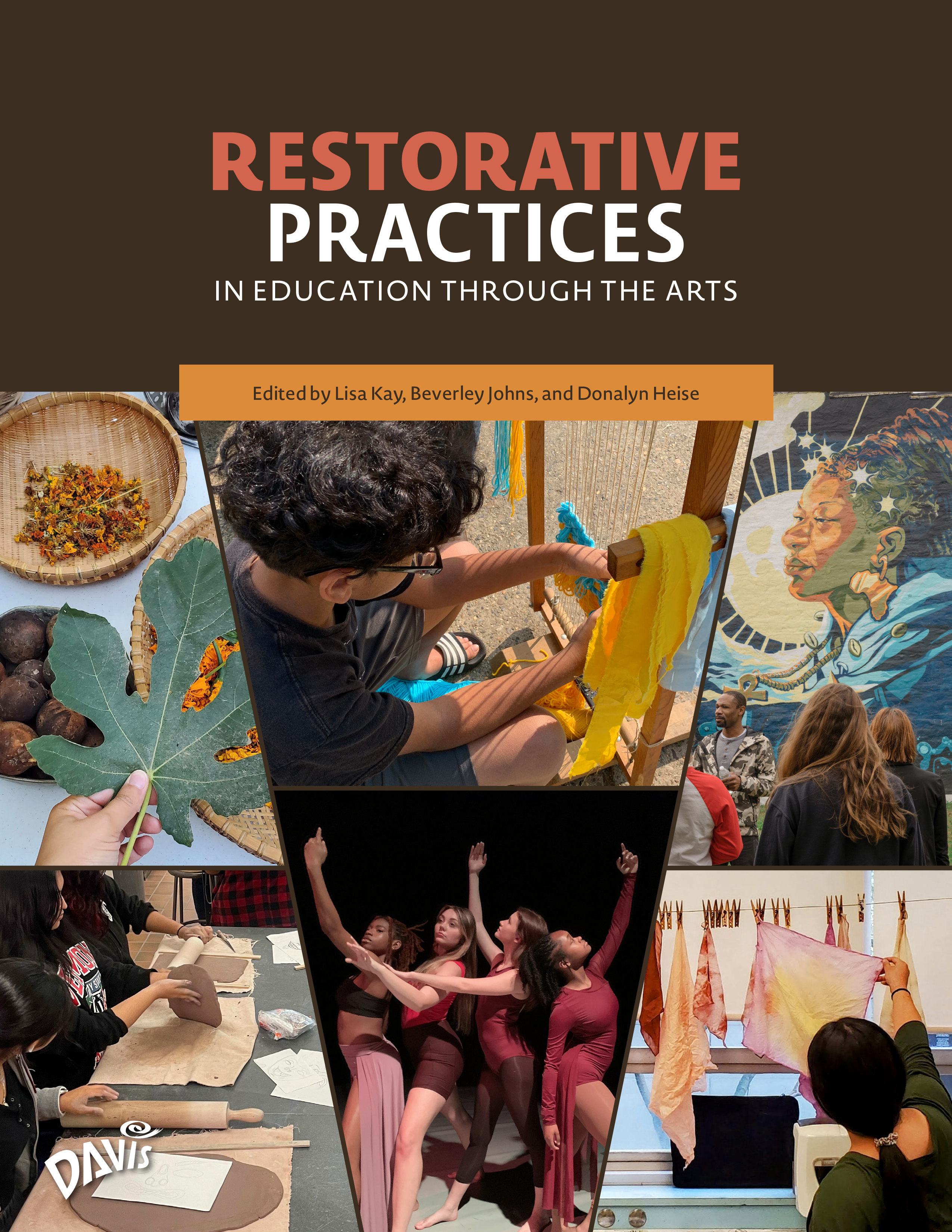What is Restorative Practice?
Restorative practice is defined as having the ability to bring back health, strength, or a feeling of well-being. Restorative practice can be defined as actions we put into place that support, encourage, and build relationships. Restorative practice also builds resilience to cope with adversity.

Restorative Practices in Education through the Arts
Recently, there has been increased attention on implementing restorative practice in the fields of education, art education, and community work due to its ability to strengthen individuals and communities, promote positive change, and improve social connections. For example, the Mural Arts Program in Philadelphia is an innovative community arts program with a school-based arts education component that works to transform public spaces and individual lives through ongoing collaboration. What began as a project to combat graffiti resulted in one of the nation’s largest public art programs. Graffiti writers were invited to redirect their talents and participate in the design and creation of public murals in their neighborhoods, which resulted in a sense of pride and place, as well as empowering them to have a voice in their community. The arts education component of Philadelphia’s Mural Arts Program includes restorative practices for youth in the juvenile justice system and in foster care, as well as in-school and after-school art classes, and apprenticeship programs. The initiatives not only focus on work-skills development but also allow young people to creatively express themselves, utilize the arts to heal and unite, and illuminate the voices of those who have been marginalized. The key to these programs is using creative art to help students envision their future and provide necessary skills for success.
Restorative practices such as these focus on the strengths and interests of individuals, giving them hope for a better, more meaningful future. These efforts can also strengthen communities. How can individual educators, practitioners, and community workers create restorative practice in their own programs? How can art restore a sense of well-being for us and those with whom we work?
Restorative Practice in Education
Restorative practice starts with creating safe and brave spaces for all learners. In educational settings, we often hear the terms safe schools, safe spaces, safer spaces, and brave spaces. The term safe schools became popular in the late ’90s as we focused on the physical safety of students. We developed policies and procedures for ensuring that weapons were not brought into schools. We focused on procedures for breaking up fights. We learned when we could search students. We broadened the term to safe spaces as we made other places, such as churches, malls, and airports, safer. We increased the use of metal detectors, and we required proof of identification with the goal of ensuring physical safety in these environments.
As we focused on trauma-informed practices and the mental health issues that students and adults face, we began to use the term safer spaces to include emotional as well as physical safety. Individuals deserve spaces that not only consider their physical needs but their emotional needs as well. All of us have the right to be in environments that are free from emotional abuse, harassment, cliques, bullying, and isolation, where even though we are physically safe, we may suffer emotional injury.
Now we need to focus on brave spaces—where we have a sense of acceptance and security and feel empowered to voice our needs and beliefs without fear of retaliation or retribution. In brave spaces, we feel a sense of ownership and know our work will be appreciated and accepted. We are part of a community.
Restorative practice through art encourages risk-taking in safe and brave environments. When restorative practice is embedded in art, it provides students with ways to express themselves in an accepting and safe environment. Artists solve creative problems through exploration, experimentation, and revision of techniques and strategies. When one process does not work, the artist is encouraged to try new solutions. Failure to make a 3D work of art stand freely results in continued exploration of processes until the end result is a stronger, better product. Through the arts, students can realize their creative potential. Some young people are unable to face their fears in the real world but feel safe enough to take risks and explore in the arts.16 Creating safe and brave learning spaces for students can restore well-being and open up avenues for learning.
Why the Arts Are Well-Suited to Restore
The arts are specifically well-suited to restore well-being through creative processes. In addition to strengthening resilience by developing creativity, resourcefulness, sense of belonging, and relationships, the arts help young people see multiple perspectives on an issue or problem. Unlike some other academic subjects, there is not only one correct answer in art. Students learn to see multiple solutions and multiple answers through art.26 Students are also able to observe that peers may have different feelings that result in different artistic expressions. Sharing perspectives promotes learning27 and respect for the individuality of their peers. Students also learn empathy and compassion when they are allowed to choose the materials and subjects to create work that is meaningful to them.28
Art develops creativity. Creativity involves finding new approaches to a problem. Successfully solving creative problems can restore a sense of self-worth and self-assurance. When students can express themselves and think creatively, they discover the many options available to them. They can experiment in a safe environment, see what works best for them, and create finished products that denote their identity and individual ideas. Creativity also involves resourcefulness and the ability to identify, utilize, and sometimes transform available resources to solve problems.
Art elevates student voice and choice. The arts provide opportunities for students to speak in their own voice through their creations. Students who have experienced trauma often feel they have limited control over their lives. Giving young people creative choices, and choices in which medium and processes they use, empowers them. Choices give students a sense of control of their own future and teaches them to reframe mistakes from failures to opportunities for growth and learning.29
This new title from Davis addresses important topics, such as creative healing practices, trauma-informed methods, and transformative learning. It provides practical strategies for art educators and anyone working with individuals or communities. Each chapter includes an introduction by the editors, suggestions for implementation, and questions for discussion.
Listen to the full podcast episode.


Comments